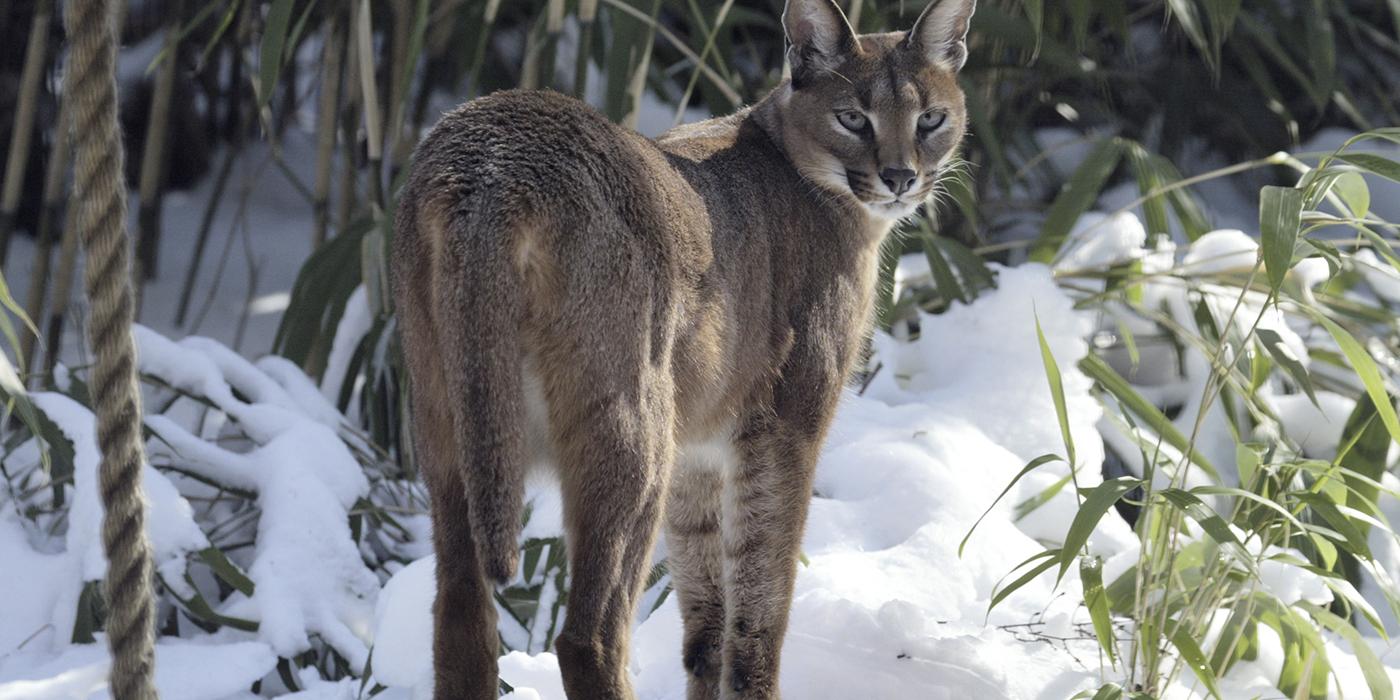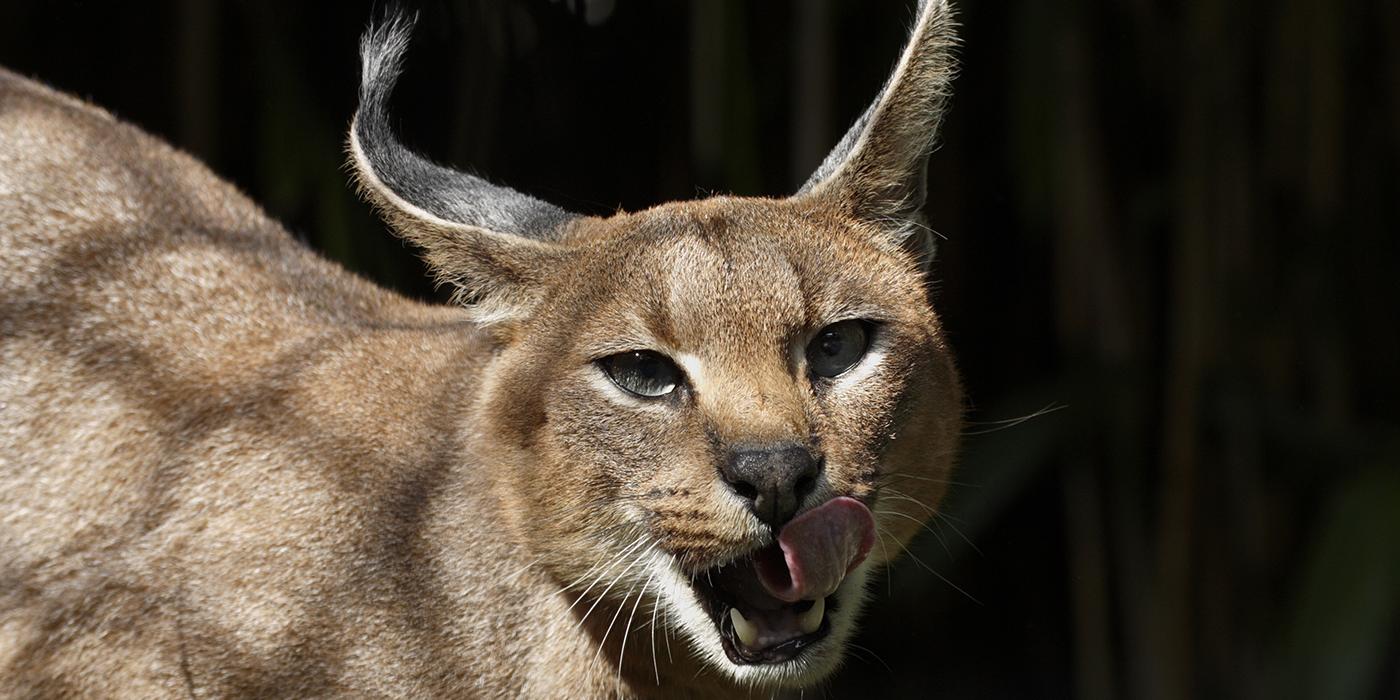Physical Description
Caracals are very striking cats. They have short, reddish-brown fur on their back and flanks, which is set off by the white fur on the chin, throat and belly. Most notably, long tufts of black fur top the caracal's ears, which are long and slender. Caracals, sometimes called desert lynx, are not actually members of the lynx family though many people confuse them with lynx because of their ear tufts.
Size
From head to tail, the caracal measures 33-48 inches (83-123 centimeters) including their tail. They are the heaviest of the small African cats weighing from 25-40 pounds (9.5-18 kilograms) Males are generally larger than females.
Native Habitat
Caracals are found in most regions of Africa and from the Arabian Peninsula through northwest India. Caracals are at home in a number of habitats. They live in woodlands, savannahs and in scrub forests, but avoid sandy deserts. In southern Africa, they usually live in upland areas.
Caracals typically use abandoned porcupine burrows and rock crevices for maternal dens, but can be found with their young in dense vegetation. Although mainly terrestrial, they are excellent jumpers and climbers.
Lifespan
Caracals live approximately 12 years in the wild and 17 years in human care.
Food/Eating Habits
Caracals are strictly carnivorous. They prey primarily on birds, rodents and small antelopes. Like most cats, caracals stalk their prey before pouncing on it. In areas of human settlement, these cats sometimes eat poultry.
Caracals sometimes store the remains of their prey in the forks of trees or in dense bushes, later returning for further feeding. They are supremely acrobatic and can leap agilely into the air to bring down prey, such as guinea fowl, on the wing.
Sleep Habits
Caracals are mainly active at twilight, but will hunt at night, in hot weather, and during the day in winter.
Social Structure
The social system of the caracal is not well understood. They are primarily solitary or live as mated pairs. Individuals appear to defend territories, which they mark with urine.
Reproduction and Development
Caracals appear capable of breeding year round. After a gestation of 69 to 78 days, a female gives birth to one to six kittens, with an average litter size of three. Young nurse for 10 to 25 weeks.
Conservation Efforts
Although currently not threatened, their populations are decreasing. Poultry farmers are not fond of caracals. Caracals' skill at jumping and climbing enables them to exploit poultry as a staple food despite the fences farmers have erected. In Iran and India, caracals have been tamed and used to help hunters.
Help this Species
- Share the story of this animal with others. Simply raising awareness about this species can contribute to its overall protection.
- Are you a student? Did you love what you learned about this animal? Make it the topic of your next school project, or start a conservation club at your school. You'll learn even more and share the importance of saving species with classmates and teachers, too.




